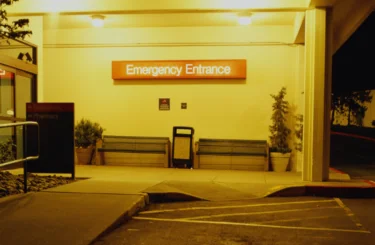
Why Are Cesarean Section Rates So High?
A recent Consumer Reports investigation of more than 1,500 hospitals in 22 states found that cesarean sections are being overused, in part for sheer convenience. Up a whopping 500% since 1970, the magazine found several possible reasons for this dramatic increase:
In the U.S. far fewer babies are born on holidays such as the Fourth of July or days around Thanksgiving or Christmas, we found when we examined three year’s worth of data on births compiled for us by the Centers for Disease Control and Prevention. That could be because hospitals tend to schedule C-sections for times when they are well staffed—or because doctors, and even some mothers, may not want deliveries to interrupt their holidays.
Investigators also discovered that hospitals might turn a blind eye to high C-section rates because Medicaid and private health insurance pays more – roughly 50% more – for C-sections than for vaginal births. According to the Center for Healthcare Quality and Payment Reform, just cutting in half the total number of C-sections performed in the U.S. would save about $5 billion yearly.
The average C-section rate for low risk deliveries among the hospitals Consumer Reports examined was about 18%, while the national average was 12.6% in 2000. C-section rates ranged from less than 5%, to as high as 57% at Three Rivers Medical Center in Louisa, KY.
Researchers found significant regional differences as well. The lowest C-section rates were in mountain states, the West coast, and the upper Midwest. And for-profit hospitals tended to have higher C-section rates.
Elliot Main, M.D., director of the California Maternal Quality Care Collaborative, reviewed the investigators’ data, and explained that obstetricians, not mothers, are to blame:
They must be older, fatter, sicker, or they must be requesting C-sections, [b]ut that’s completely bogus. As a doctor I can convince almost any woman in labor to have a C-section…What it boils down to is culture. Culture of the hospital, the nursing staff, even the patients.
Dr. Main further observed that “hospitals with a culture of facilitating vaginal birth – those that allow vaginal birth after caesarean, for example, or those where 10% or more of births are attended by nurse midwives – have far lower rates of C-sections.”
There are absolutely times when a C-section is the safest option for both mother and baby, and is a lifesaving procedure. But a C-section should be reserved for when it is medically indicated, and not when it is used to avoid a holiday or a date with the golf course. After all, lest we forget, it is a major abdominal surgery, requiring a 6-inch incision in the abdomen and a second through the uterus, which results in additional risks and a much longer recovery time for the mother.
Some physicians blame their tendency to perform non-indicated C-sections on the fear of being sued for malpractice. That fear is unfounded. First, life-threatening complications are the exception to the rule whether babies are born vaginally or by C-section. “[C]ompared with women giving birth vaginally, healthy, low-risk women undergoing their first C-section were three times more likely to suffer serious complications – such as severe bleeding, blood clots, heart attack, kidney failure, and major infections – according to a 14-year analysis of more than 2 million women in Canada published in 2007,” noted Dr. Main. “Once you’ve had a C-section, there’s a big chance that all future births will also be by cesarean…[a]nd that’s when the risks really start to rise.” Studies have consistently found that vaginal deliveries for uncomplicated births are also better for babies.
When you are choosing your obstetrician, don’t forget to ask the doctor about his or her C-section rate, the rate of the hospital where you intend to deliver, and both the hospital’s and physician’s policies regarding when C-sections are performed and when induction is initiated.
Lisa Esser-Weidenfeller
Lisa Esser-Weidenfeller represents injury victims in personal injury and medical malpractice claims. She also represents individuals in cases against those who have committed horrific acts of sexual assault.





